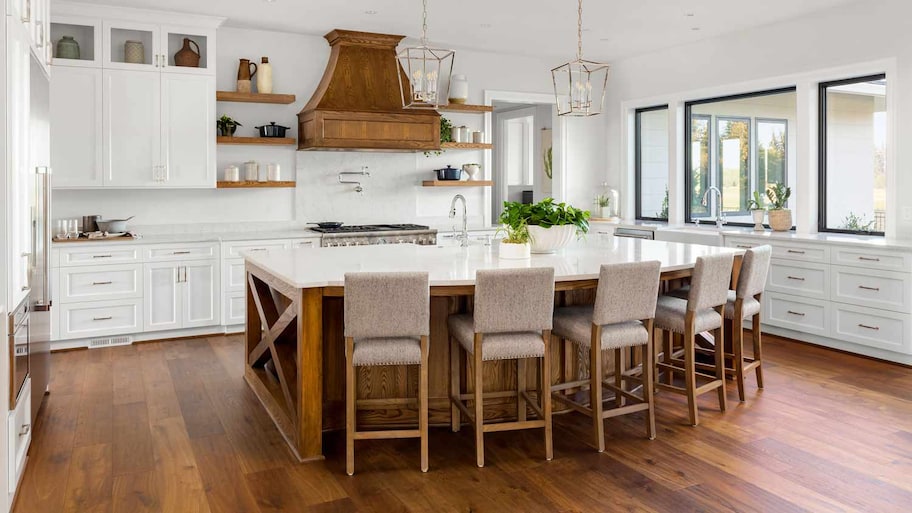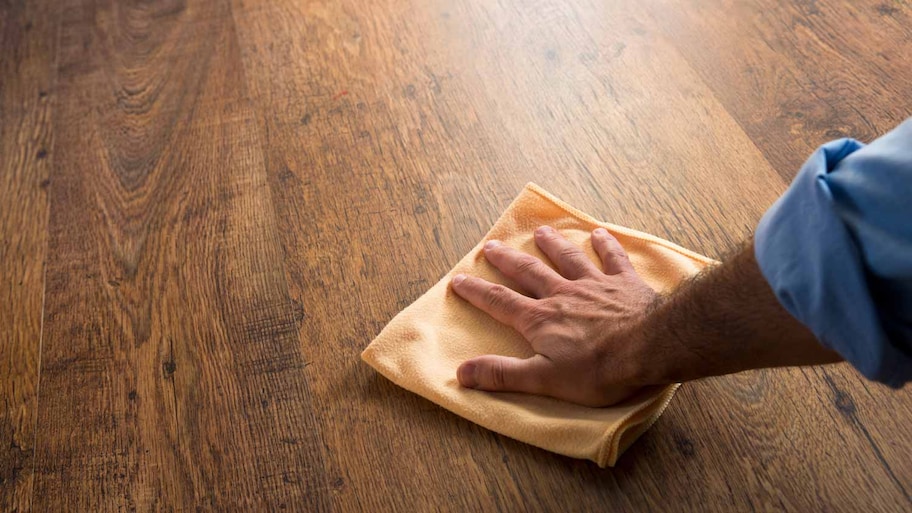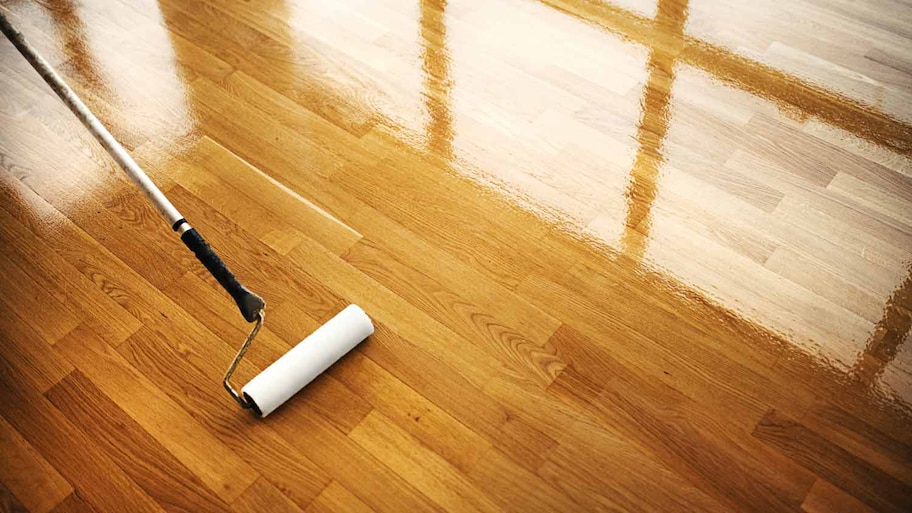How Long Do Hardwood Floors Last? Maintenance Makes a Big Difference
Get the most from your beautiful hardwood floors by keeping them clean


It is beautiful, durable, and timeless. It comes in a variety of finishes and colors, and it can dramatically increase your home’s value. What’s not to love about hardwood flooring? Here, we explain how long hardwood floors last and how to get the longest life out of yours.
How Long Does Hardwood Flooring Last?
Solid hardwood flooring lasts 30 to 100 years (or more). Engineered hardwood flooring can last at least 20 to 30 years. Both products’ lifespans depend on the type of wood, the quality of the product, how it was installed, where it is located, and whether it receives regular maintenance.
You can expect your solid hardwood floors to last a century or longer if you choose flooring made of harder wood like oak or cherry, seal and finish it correctly, and take care of it. The reason solid hardwoods last so long is their tough, natural construction and the fact that you can refinish rather than replace them. If you choose a distressed or hand-scraped finish, scuffs and dents will blend in, allowing you to embrace signs of wear rather than refinishing, which will further extend its lifespan.
While engineered hardwood does not have the same extra-long lifespan as solid wood flooring, it still can last considerably longer than carpeting and other types of flooring. Again, the type of floor you choose and the way you care for it will determine how long it maintains its looks. Since engineered hardwood cannot be refinished repeatedly, daily maintenance and careful treatment are your best tools for longevity.
When deciding if hardwood flooring is right for you, learn more about the difference between solid hardwood and engineered hardwood and what it takes to maintain hardwood flooring.
Solid Hardwood vs. Engineered Hardwood

They may look similar on the surface, but solid hardwood flooring and engineered hardwood floors are very different at their core.
Manufacturing
Solid hardwood flooring is exactly that—flooring boards made of solid hardwood, such as walnut, oak, birch, poplar, maple, and cherry wood. It comes in a wide range of species and colors available in both prefinished and unfinished boards. Hardwood plank sizes vary, but most solid hardwood boards are narrow and fit together with tight seams.
Engineered hardwood is actually a thin layer of hardwood affixed to high-quality plywood that is made to look like natural wood flooring. Boards are almost always prefinished, and the range of colors and types of wood is usually smaller than solid hardwood. Engineered boards are generally wider, and they may have beveled edges that leave a slight gap between boards when installed.
Lifespan
If you care for it properly, solid hardwood can last 30 to 100 years or longer. Good-quality engineered hardwood usually lasts 20 to 30 years, and some brands advertise even longer life expectancy. For both types of flooring, the quality of the product and installation matter, as do consistent maintenance and cleaning.
Cost
Surprisingly, there is not much of a cost difference between solid hardwood and engineered hardwood. Prefinished solid hardwood flooring usually costs between $5 and $13 per square foot, while engineered hardwood costs between $3 and $11 per square foot. Hardwood flooring installation cost is about the same for both types, generally costing $4 to $10 per square foot for professional flooring installation near you.
Refinishing
Since solid hardwood is made from a single piece of wood, it can be refinished numerous times. This process involves sanding down the top layer of the floor to remove staining, discoloration, scratches, dents, and other surface damage, then restaining and sealing the floor. This is usually done by a professional. You should be able to refinish solid hardwood floors up to 10 times, but that varies depending on the manufacturer, type of flooring, floor thickness, and how aggressively you refinish it.
Most types of engineered hardwood cannot be refinished, although you can refinish some brands once or twice, depending on the thickness of the surface hardwood layer. This limitation means you cannot usually buff out discoloration and scratches; when the floor looks damaged or old, replacement is the only option.
The cost to refinish hardwood floors varies, but you should consider ongoing refinishing and maintenance costs when deciding whether hardwood is the best choice for you.
Ease of Installation

Both types of flooring usually use the tongue-and-groove method, in which the installer connects boards and nails them down to the subfloor. Some types of engineered hardwood are floating floors, while others can be glued down. Engineered wood flooring is generally easiest for DIY installation.
Environmental Friendliness
Hardwood flooring uses more solid wood than engineered flooring does, but it also lasts longer and can be refinished rather than replaced. It is completely biodegradable when its useful life is over, and experts can reclaim and reuse or recycle flooring that is in good condition. Many companies supply sustainably sourced hardwood flooring for lower environmental impact; however, less eco-conscious companies can clear-cut forests, overharvest old growth trees, or make wood flooring from slow-growing or rarer trees.
Engineered hardwood uses less solid wood or leftover wood, limiting waste. That said, the glues that adhere the facade to the composite core may contain harmful volatile organic compounds. It also has a shorter lifespan and cannot be recycled or reused.
Resale Value
Solid and engineered hardwoods look similar and give homes an upscale and natural look, so both appeal to homebuyers. While buyers tend to prefer solid hardwood because of its longer lifespan, high-quality engineered hardwood floors are still a hit with homebuyers. Dollar for dollar, solid hardwood flooring has a slight edge on return on investment, so you may want to opt for solid hardwoods if resale value is your goal.
Hardwood Floor Maintenance Tips

Your hardwood flooring will last a lot longer if you take daily care of it. While that might sound like a lot of work, hardwood floors are an investment, and the better you care for them, the better they will look and the longer they will last. Here are some of the best strategies for how to care for hardwood floors.
Protect Your Wood Flooring
The best way to maintain hardwood floors and prevent scratches, dents, dullness, and damage is to protect them proactively. Here are some top tips:
Use doormats in front of all entry points.
Do not wear shoes in the house.
Place area rugs and runners in high-traffic areas, in front of furniture, and under furniture legs.
Use furniture pads under furniture feet, and only move furniture by picking it up or using sliders.
Keep pet nails short. If your pet’s nails click on the hardwood flooring, they are too long and can scratch the flooring.
Clean up spills and visible dirt immediately.
Keep floors dry. Use dry or slightly damp mops or cloths for regular cleaning, and never use a wet or steam mop.
Use only approved cleansers, cleaning tools, and methods for your specific flooring.
Maintain a home temperature of 60 to 80 degrees Fahrenheit, with 30% to 50% humidity. Temperature and moisture changes can cause wood flooring to shrink, swell, cup, split, and gap.
Sweep or Dust Mop Wood Floors Daily
Dust and larger grains of sand and dirt will scratch floors, so it is vital to remove dust regularly. Go over floors every day with a soft broom or dust mop. If you see dirt or dust between cleanings, take care of it right away before it becomes stuck on or ground into the floor surface.
Vacuum and Mop Regularly
Removing debris with a broom or dust mop is great, but some grains can still get stuck on the surface and in tiny grooves in or between boards. Vacuum once a week or after extra traffic, being sure to use your vacuum’s hard floor setting. Never use the rotating brush; instead, use a vacuum that allows you to turn off the beater brush and has softer rubber wheels instead of hard plastic wheels.
Clean High-Traffic Areas More Frequently
Entryways, hallways, junctures between rooms, and other high-traffic areas need more care than little-used rooms. To maintain wood flooring in high-traffic common areas, sweep or use a dust mop often, including after guests leave or after the morning and afternoon household rushes are over.
Address Scratches and Dullness Right Away
Normal use and accidents scratch and dull hardwood flooring over time. Rather than ignoring these early signs of damage, take care of them immediately. Not only will your floor look better right away, you will also help prevent future damage.
Liquid scratch concealers: This liquid concealer permanently covers and seals scratches to hide blemishes and protect against water damage. This product comes in a variety of colors to match different wood flooring hues.
Floor polish: Dull floors? If it has been a while since you have waxed or polished your floors, try a fresh coat. Apply a light coat of wood floor polish according to the directions on the bottle. This will fill small scratches and abrasions, giving a smoother, shinier look to your floor. It can also protect against damage between waxing and refinishing.
Floor wax: Wood flooring experts recommend waxing floors every six months, depending on the amount of traffic in your home. Wax comes in solid and liquid forms, and each brand has its own application recommendations, but all types will help deep-clean wood flooring and make it look like new again.
Repair kits: Scratch repair kits and hardwood touch-up kits address specific issues and let you spot-treat small areas of damage.
Apply a New Coat of Finish Every Three to Five Years

Recoating hardwood floors is a quick way to make them look like new and add a layer of protection. When you recoat, you apply a fresh coat of finish over the existing finish, removing scratches and dullness and making the floors look freshly redone. You may also recoat flooring to change the color of the finish, to reapply texture, or to refresh hardwood flooring that was under carpeting and does not need to be refinished.
This is less expensive and faster than refinishing, and regularly recoating wood floors will extend their life and beauty between refinishing. Since you can only refinish floors a certain number of times, adding new coats of hardwood floor finish may extend the overall lifespan of the floor. Recoating is still a detailed process, however, so be sure to prepare and recoat the floor correctly or you may damage it.
Sand and Refinish Hardwood Floors Every 10 Years
Refinishing hardwood flooring is the process of completely removing the existing finish and the top layer of the wood by sanding thoroughly, then staining and sealing the wood with a new layer of finish. This is a complicated and time-consuming process that involves multi-step sanding with heavy machinery, followed by the careful application of a new coating to bring out the floor’s natural beauty.
The question of when to refinish hardwood floors does not have a static answer. Experts recommend refinishing hardwood floors every 8 to 12 years, but the actual time depends on how well you maintain your floors. If you regularly clean and maintain your flooring, along with recoating and spot-treating damage and dullness, you can extend the time between refinishing.
Follow Flooring Manufacturer Instructions
Most manufacturers issue care and maintenance instructions for their hardwood flooring. These are best practices that they have developed for specific care of their flooring products, so it is smart to know and follow their recommendations. These often include daily care, maintenance, cleaning, recoating, refinishing, and other instructions. You may invalidate your flooring warranty if you disregard manufacturer instructions.
